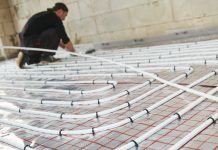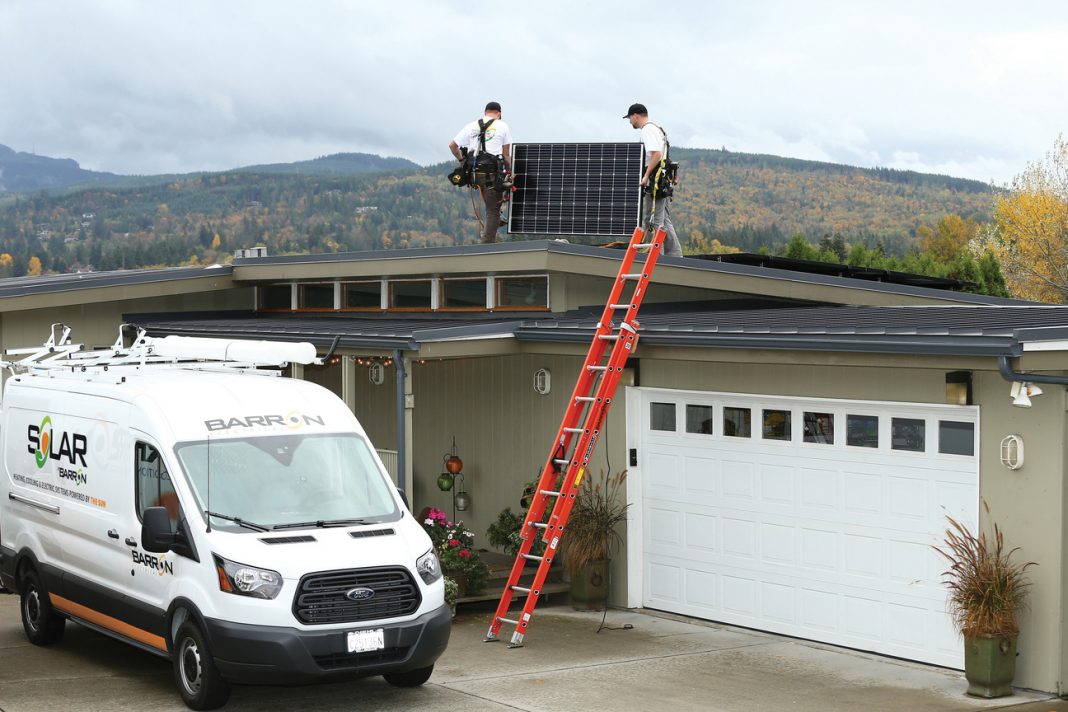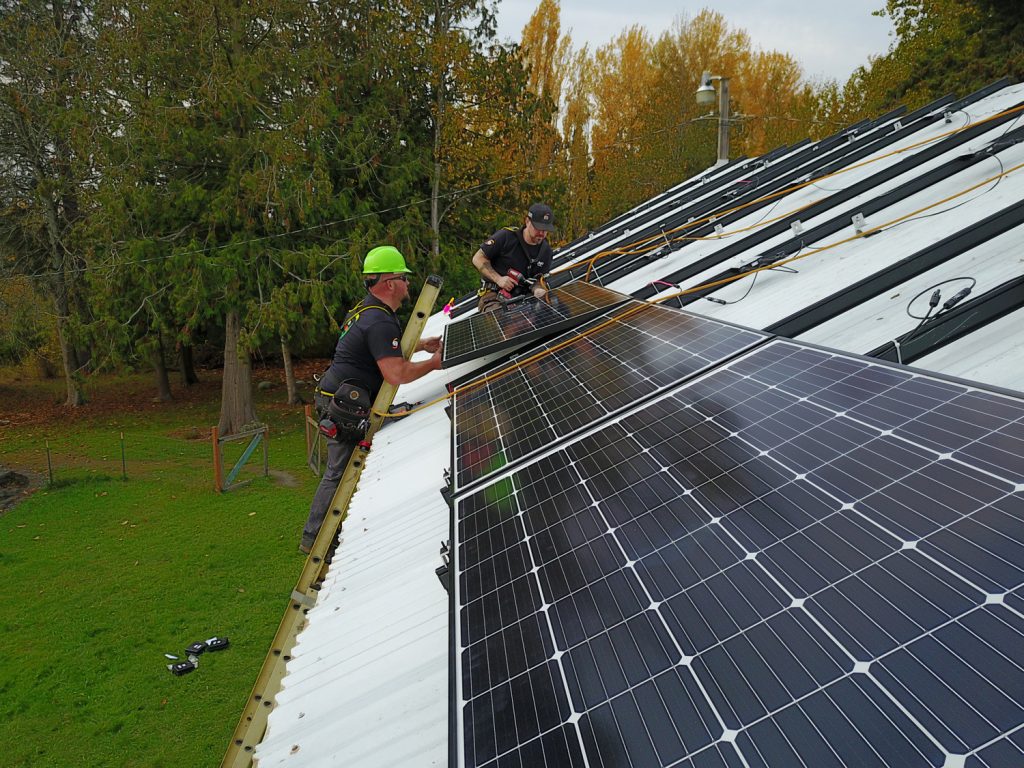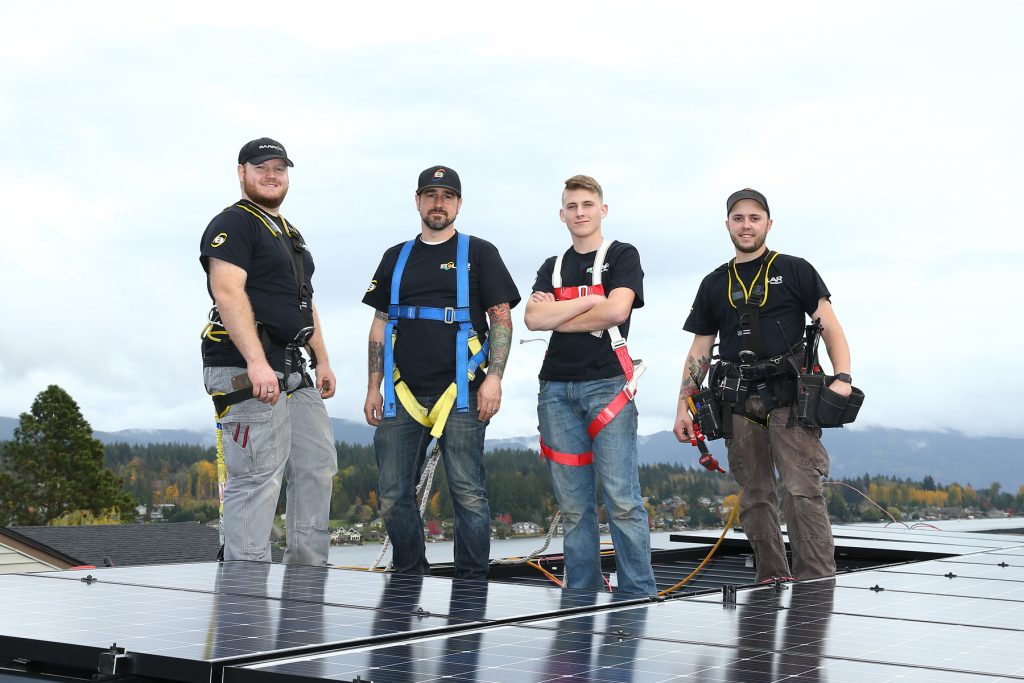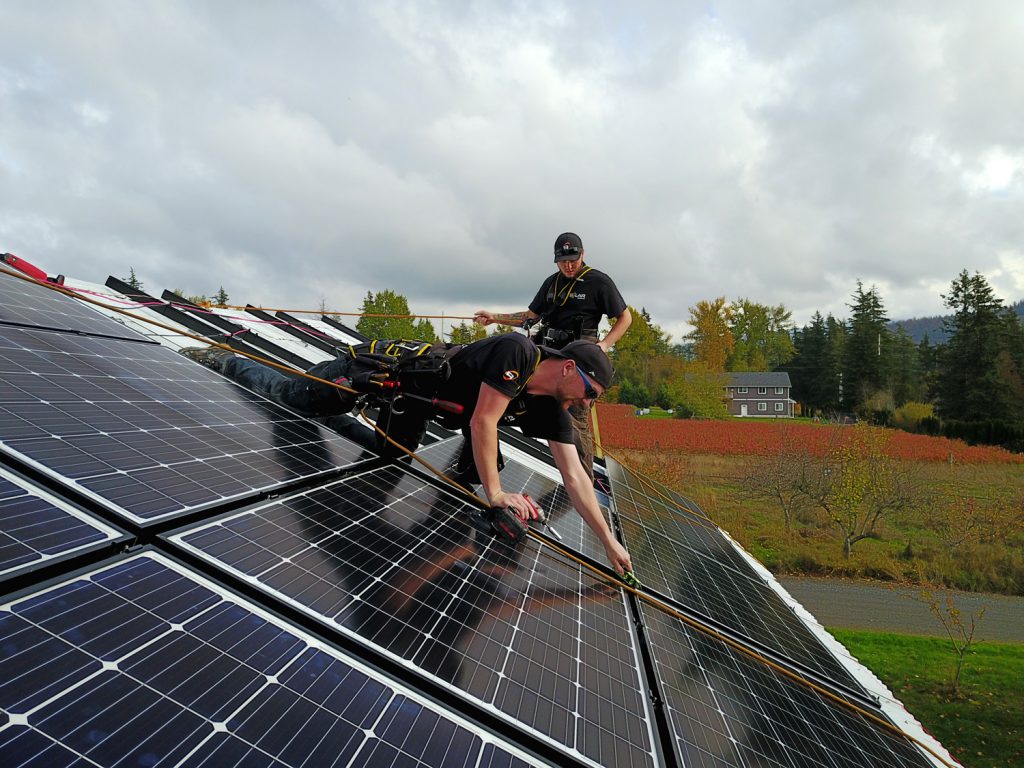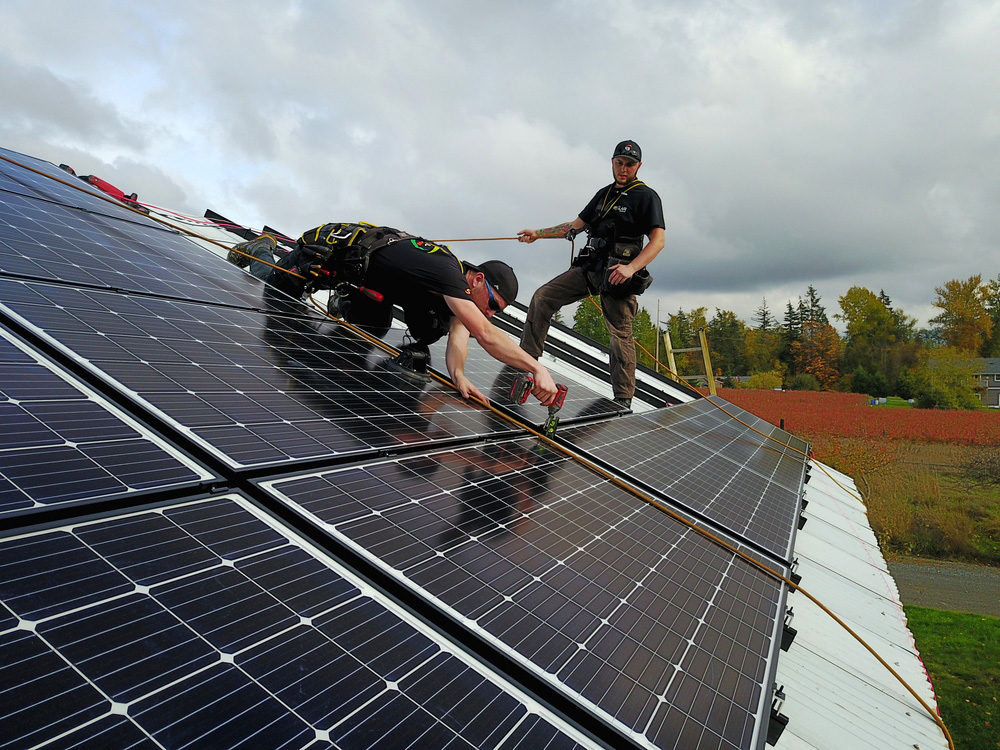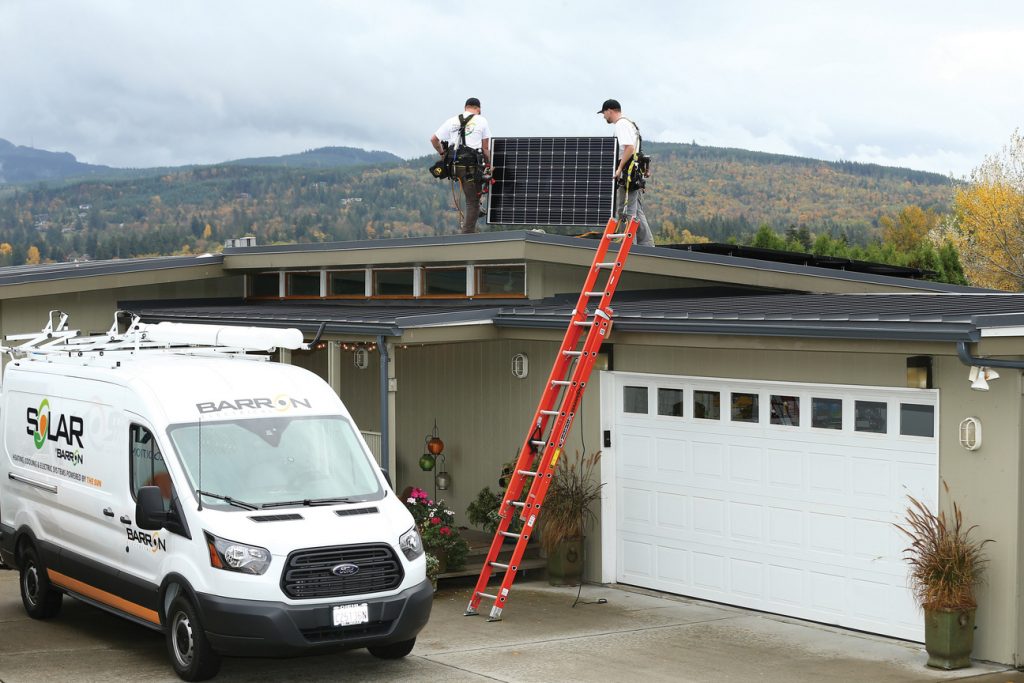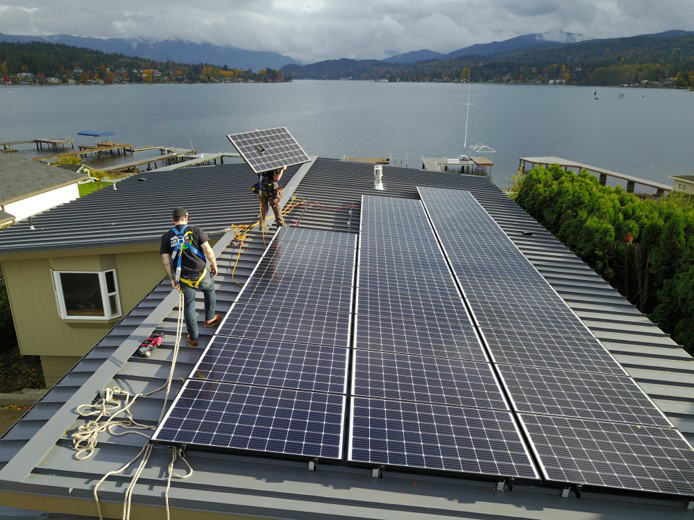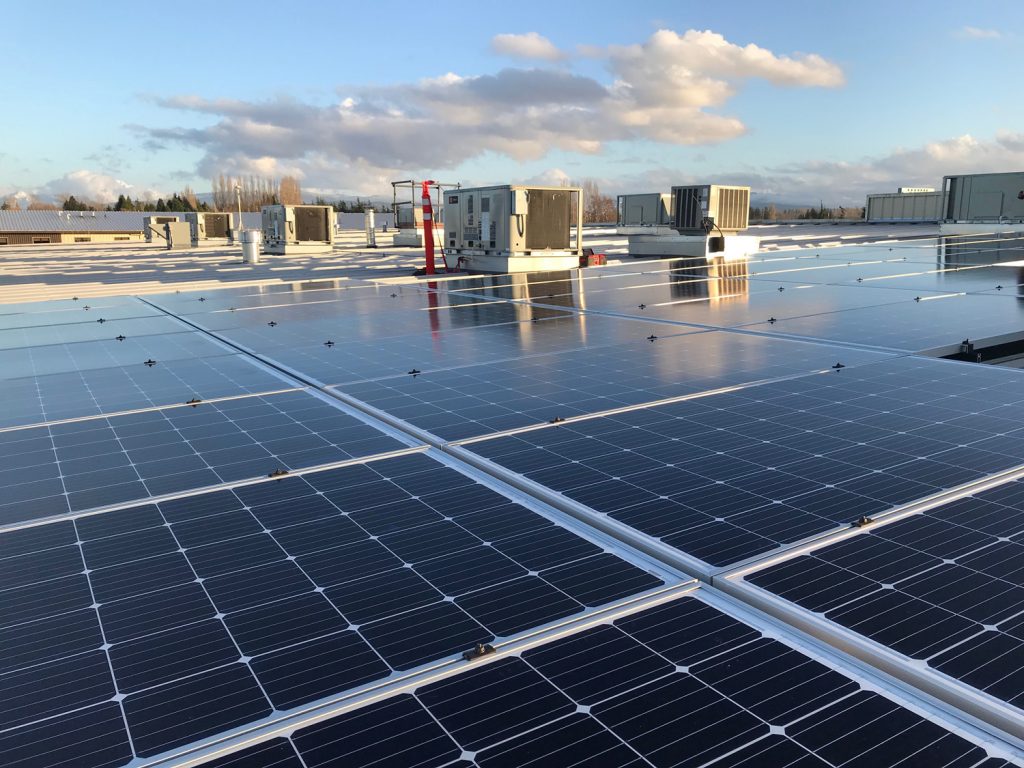Barron Heating is rolling out a new solar division due to customer demand. Over the last year, Solar by Barron has taken on solar test projects, completing residential and commercial installations.
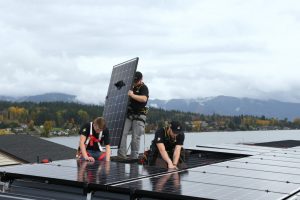
“The more we looked at it, the more we saw the value for our customers,” says Michael Takemura, Barron’s building performance manager, who has attained certification through the North American Board of Certified Energy Practitioners (NABCEP) and is helping develop this new division.
Misconceptions swirl around the subject of solar electricity. Some claim it isn’t the best option for our overcast area. Others think that if you overproduce, you actually get paid by the electric company. And some think if you have solar panels, you can power your home in an outage. Barron is busting each of these solar myths wide open with solid knowledge and training.
“You don’t need straight sun to produce,” says Takemura. “With Solar by Barron, panels can produce energy with some overcast.” In fact, the Pacific Northwest is actually in a great position to set up solar systems and, in many cases, even to attain “net zero.”
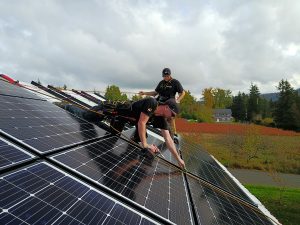
Net zero may also differ from what many think. It doesn’t mean that a home never uses power from the grid; rather, the grid supports the home’s needs in the winter when panels aren’t producing as much electricity, and when production goes up in the sunnier months, power flows into the grid and offsets the total annual usage.
Another misconception many have is that any extra electricity produced by solar panels results in a payout from the utility company. That isn’t the case – at least, not in Whatcom County. Takemura strongly recommends seeking instead to produce just enough solar electricity with Solar by Barron to reduce your monthly average bill to as close to zero as possible.
Takemura also wants to tackle the misconception that homes with solar panels automatically have power if the grid goes down. In fact, most solar installs are what he calls “grid interactive,” which means the solar panels don’t store the energy they harvest in a battery bank. Instead, buildings use solar energy when it’s available, and then circulate any excess back into the grid. The power company keeps a record of how much extra energy each system produces, and customers can use up this extra energy “credit” later when they need extra power from the grid. Without batteries to store the energy, power from the solar panels isn’t accessible to the home without the grid “managing” the system.
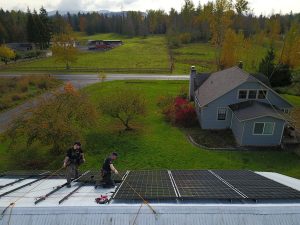
But Solar by Barron offers options for the client that wants more emergency preparedness. Takemura suggests propane and natural gas generators, which can fully power the home or, depending on size, power emergency systems such as the refrigerator or the furnace. Solar customers can also opt for battery backup and inverter options, storing the power for later rather than sending it into the grid for credit. This approach requires more discussion, because it may not be the most cost-effective option, especially when maintenance and other factors are taken into account.
Because every site is unique, Barron will perform a complete on-site evaluation for free. They even help homeowners navigate the choices and guide them through the process without getting too technical. It’s also worth noting that having a solar system raises the value of the home $18,000 on average, according to Barron’s website, not to mention the immediate and long-term energy savings that continually increase year after year.
For example, one of their early installs was for a client who used 21,000KWH per year. Barron calculated this family would need 70 panels to offset their current usage. Takemura noted that the home had a low amount of attic insulation and that the attic and crawlspace were not air-sealed. To increase efficiency, they air-sealed the attic and crawlspace and installed a ductless heat pump. The result with Solar by Barron was an energy reduction of almost two-thirds and their energy usage fell to 7,500KWH per year. The family ended up with 24 panels and is now anticipating a net-zero year of usage. Where they once faced electric bills of $300 – $500 every winter, they will now pay about $9 each month.
This is an investment that pays off over the long-term. Takemura said the family paid about $35,000 for the heat pump, install, insulation and air-sealing, and solar system. But, he points out, there’s now “energy smart financing.” This allows Barron to work with Puget Sound Cooperative Credit Union, which has both a solar loan and an energy smart loan program, allowing customers to finance these smart, future-conscious decisions.
This particular customer now has a loan payment that is lower than their average electric bill used to be. One thing that’s not a myth is solar’s savings, which can be both immediate and long-term. A 30 percent tax credit can give customers up to 30 percent off the system’s cost right away. Barron advises all clients to look into this during the financing process.
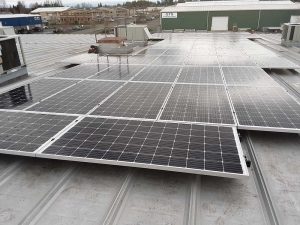
It’s also possible, with advance planning and some small technological changes, to install a smaller system and add on gradually over time. Barron helps customers plan for the immediate as well as the long-term. “One of the things that we’ve found at Barron is that we not only address generating power, but we can also address the biggest use of your power,” Takemura says. “And the biggest use of your power is your heating system.”
Generating power, conserving energy with weatherization, and energy efficient systems (such as heat pumps) make up three pillars of efficiency at Barron. They use an “hourly analysis program,” which helps to predict the effects of each factor. The reduced energy consumption from weatherization and energy efficient systems allow the solar system to be smaller, and reaching net zero might happen sooner than you think.
Site assessment, design and proposal, financing, and install can all happen in about a month to six weeks, even with a heat pump install. And Barron performs heating and solar installs year-round.
Sponsored



